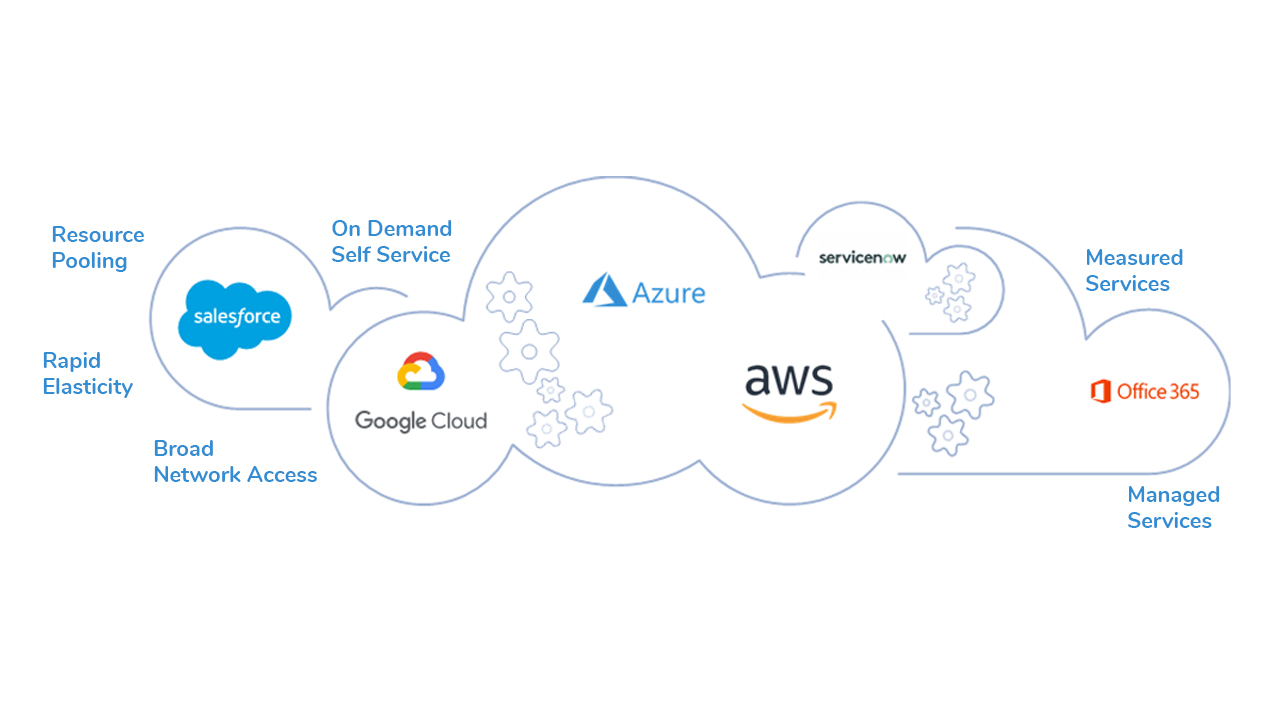Remain Upgraded with the Cloud Services Press Release: Fads and Developments
Remain Upgraded with the Cloud Services Press Release: Fads and Developments
Blog Article
Achieve Seamless Scalability With Cloud Provider
In the ever-evolving landscape of cloud solutions, accomplishing seamless scalability stands as a foundation for contemporary businesses looking for to remain affordable and adaptable. The pursuit for seamless scalability with cloud services introduces a globe of opportunities for those ready to accept the transformative power of vibrant source management.
Advantages of Cloud Scalability
Cloud scalability supplies companies the versatility to dynamically adjust sources based on need, guaranteeing ideal performance and price efficiency. One vital advantage is the ability to scale resources up or down quickly in reaction to rising and fall workloads. This agility allows businesses to fulfill transforming consumer demands without over-provisioning resources, eventually causing cost financial savings. Scalability also boosts efficiency by making sure that systems can take care of boosted traffic or work without experiencing downtime or downturns. By effectively alloting resources, organizations can maintain high degrees of performance during peak times without unnecessary expenditures during quieter durations. Furthermore, cloud scalability advertises development and experimentation by enabling businesses to conveniently test originalities and range them as needed. This flexibility motivates a culture of constant improvement and adaptation, enabling organizations to remain affordable in a quickly advancing market landscape. Inevitably, the benefits of cloud scalability extend past price savings to incorporate better efficiency, agility, and development.
Key Attributes for Scaling
Effective scaling in cloud services depends on essential attributes that allow companies to readjust resources dynamically based upon demand. One important feature for scaling is flexibility, allowing resources to scale up or down in feedback to changing workloads. This makes sure that organizations can fulfill performance demands without over-provisioning sources. One more crucial attribute is scalability, making it possible for systems to deal with raised workload by including resources flawlessly. This function is crucial for fitting development without jeopardizing efficiency. In addition, automation plays a crucial function in scaling by automating the provisioning and de-provisioning of resources based upon predefined plans. Automation lowers human treatment, boosts efficiency, and ensures quick response to changing demands. Tracking and analytics devices are likewise necessary for scaling, providing insights right into resource usage, performance metrics, and prospective traffic jams. These tools allow organizations to make educated choices and optimize resource appropriation for reliable scaling. Overall, these key functions jointly encourage companies to attain smooth scalability in cloud services.
Applying Auto-Scaling Methods
To successfully maximize resource allotment and adapt to differing workloads, companies need to tactically execute auto-scaling methods in their cloud solutions infrastructure. Auto-scaling permits systems to immediately adjust the number of compute sources based on real-time demand. There are numerous auto-scaling methods that organizations can use, such as anticipating scaling, which makes use of historical information to forecast future resource demands, and responsive scaling, which replies to existing workload modifications.

Ideal Practices for Scalability
For companies intending to improve their scalability in cloud services, executing best techniques is critical for optimal performance and source administration. One key ideal method official website is creating applications with a microservices architecture. This approach breaks down applications right into article smaller, independent services that can be released, updated, and scaled individually, permitting better versatility and scalability.
One more important method is making use of containerization innovation, such as Docker or Kubernetes. Containers make it possible for the packaging of applications and their dependences right into separated devices, making it much easier to scale components independently and deploy them consistently across different atmospheres.
In addition, executing automated release and facilities as code (IaC) can simplify scalability efforts (linkdaddy cloud services). Automation devices like Terraform or Ansible help in provisioning and taking care of sources efficiently, minimizing hand-operated mistakes and allowing quick scalability
Additionally, checking performance metrics, establishing signals, and conducting regular capability preparation are necessary practices to make certain positive scalability monitoring. By adhering to these best methods, companies can accomplish smooth scalability in their cloud solutions while optimizing efficiency and resource use.
Surveillance Performance Metrics
When assessing the effectiveness of cloud services scalability, closely checking performance metrics is important for making sure ideal capability and source allocation. By continually tracking vital efficiency indicators (KPIs) such as reaction times, latency, resource, and throughput usage, organizations can acquire useful insights into the wellness and performance of their cloud infrastructure. Keeping track of performance metrics permits the very early detection of prospective bottlenecks or concerns that can affect scalability, enabling proactive actions to be taken to resolve them prior to they rise.

Verdict
In conclusion, achieving smooth scalability with cloud solutions is necessary for organizations to maximize efficiency, enhance see this innovation, and keep high efficiency levels during peak times. By leveraging the benefits of cloud scalability, implementing auto-scaling approaches, utilizing vital functions such as elasticity and automation, and following best practices like application layout and efficiency monitoring, businesses can efficiently scale their systems while maximizing source use and performance.
The pursuit for smooth scalability with cloud solutions reveals a world of opportunities for those prepared to accept the transformative power of dynamic resource administration.
Cloud scalability offers companies the adaptability to dynamically adjust sources based on demand, making certain optimum efficiency and cost performance. One more crucial attribute is scalability, enabling systems to take care of boosted workload by adding sources effortlessly.For organizations intending to enhance their scalability in cloud services, implementing best methods is essential for optimum efficiency and resource monitoring.When evaluating the performance of cloud services scalability, very closely checking performance metrics is critical for making sure optimum functionality and resource allowance.
Report this page